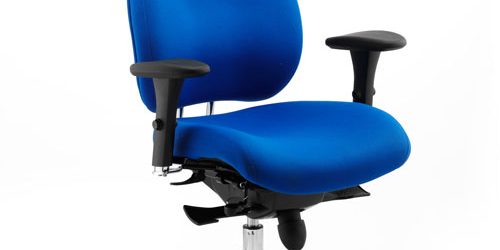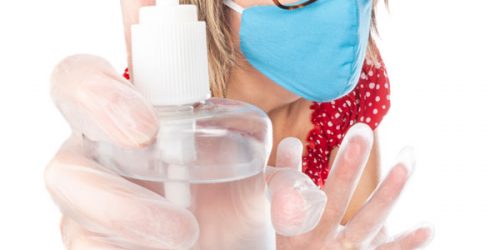Hygiene in the workplace: The in-depth guide to healthy workplaces
The health crisis has exacerbated the risks associated with poor hygiene in the workplace. Employers and employees alike are now more concerned about keeping their work premises clean. It is crucial for companies to put in place effective measures to protect the health of their employees and customers. In this guide, you will find the measures to follow to ensure good hygiene in the workplace.
Hygiene in the workplace: European legislation
European legislation protects the health and safety of employees. The right to hygiene must be guaranteed by all employers, regardless of their line of business or the size of their company. They are obliged to put in place measures to prevent occupational risks.
The right to a safe and healthy working environment
Article 3 of the European Social Charter of the Council of Europe recognises the right to hygiene for all workers. As a result, employers are required to comply with the regulations in force in their country to ensure a safe and healthy working environment for all their employees.
Food hygiene and safety
Food hygiene is a major concern for European authorities. In order to guarantee food safety, the European Union adopted rules on hygiene of foodstuffs in 2004. This set of regulations aims at protecting the health of consumers.
Work clothes and PPE
Directive 89/656/EEC requires employers to provide personal protective equipment (PPE) to maintain a satisfactory level of hygiene in the workplace. These PPE and work clothes must be suitable for the work environment to avoid any risk of contamination. Employers are also responsible for ensuring that the PPE provided meets European safety standards and that it is properly maintained and used by employees.
Risks due to poor hygiene in the workplace
Hygiene and safety in the workplace are significantly linked. Poor hygiene increases the risk of illness and harms the company’s image. The cleanliness of the premises even has an impact on employees’ productivity.
Increased number of sick days
Within a company, employees share several spaces, such as the lavatories, the cafeteria, the meeting room, and sometimes even their workstation in certain set-ups. Equipment that is not cleaned regularly can lead to the growth of microbes and viruses on the surfaces. This leads to the transmission of pathogens and an increase in the number of sick days. On the other hand, the implementation of effective hygiene measures limits the proliferation of microorganisms.
Increased risk of occupational diseases
Exposure to dust, toxic substances, or hazardous chemicals increases the risk of developing occupational diseases, such as respiratory problems, allergies, or cancers. Employers should make their staff aware of these risks and train them in best hygiene practices.
Loss of employee motivation
A well-organised and clean workplace has a direct impact on employee morale and motivation. High standards of hygiene demonstrate to teams that their employer cares about their physical and mental health and their well-being at work. Everyone can concentrate on their work without being disturbed by the dirt or waste that accumulates. This safe working environment results in higher productivity and fewer absences.
Tarnished brand image
Poor hygiene in the workplace affects a company’s reputation. It gives the image of an unprofessional and unreliable institution. On the other hand, a clean and safe environment is a sign of quality. In hotels, restaurants, and food outlets, a high level of hygiene increases the confidence of customers. A single health scandal could significantly damage the brand image of an establishment.
Rules for a healthy, hygienic workplace
Hygiene in the workplace is a shared responsibility between the employer and the employees. The employer must implement a workplace hygiene policy that complies with the legislation, but all employees must also get involved by adopting the right actions on a daily basis.
Implement regular cleaning of the company premises
The maintenance of work areas and communal spaces is the basis of good hygiene within a company. The design of ergonomic workstations can be considered with the added benefit of making it easier to disinfect surfaces. Hiring a professional cleaning service provider helps to maintain a clean and healthy working environment.
However, weekly maintenance is not enough to ensure impeccable hygiene. Daily cleaning of frequently touched surfaces prevents the growth of bacteria and viruses and helps ensure good hygiene in the workplace. It is also necessary to use effective cleaning products that are suitable for the work environment.
Provide changing rooms suitable for the company’s activity
The company changing room is the space where employees transition from their private lives to the workplace. Compliance with hygiene rules in this work area prevents cross-contamination between work and personal clothing. Each employee must ensure that bacteria and viruses from outside do not enter critical hygiene areas.
Some activities require that shower stalls are provided in the changing rooms. Teams working with hazardous chemicals, toxic dust, or pathogens must ensure that they do not transfer these substances to their homes.
Use effective hand hygiene products
Hands are a vector for the spread of germs, so it is important that employees wash their hands regularly. Hand hygiene products must be effective against pathogens. The use of industrial soap can remove the most stubborn dirt.
Basic personal hygiene rules such as washing hands when leaving the bathroom should be standard practice within the company. Washing hands before lunch breaks ensures that no particles that are harmful to health are ingested. These actions are everyone’s responsibility. Employers can encourage this by displaying clear and visible messages around the company premises about the importance of hygiene and work area cleanliness.
Control food safety
Food safety is a crucial aspect of hygiene in the workplace. Constant compliance with HACCP (Hazard Analysis and Critical Control Points) standards reduces the risk of a health crisis. In this context, it is important to establish precise procedures and to ensure that they are applied on-site. Employees should also receive quality training on best food safety practices.
The use of appropriate equipment for food processing and storage helps to ensure food safety. Stainless steel is considered the safest and most hygienic material for handling food. It is suitable for wet, non-corrosive environments, and its smooth surface prevents bacteria from attaching, thereby reducing the risk of contamination.
Manage waste in line with hygiene standards
Whether in offices, warehouses, or workshops, effective waste management helps to protect the environment and the health of staff. The optimal organisation of waste management in companies consists of 5 steps:
- Making an inventory;
- Establishing the waste processing strategy;
- Choosing the right service provider;
- Controlling costs;
- Implementing waste management.
Waste must be stored safely and hygienically in suitable containers. It is essential that containers for infectious waste are clearly identified. Regular maintenance of waste storage areas helps to prevent the spread of pathogens and pests.
Sustainable hygiene in the workplace through innovation
Technological innovations offer new opportunities to improve the sustainability and effectiveness of hygiene in the workplace. From eco-friendly cleaning products to automatic dosing systems and data analytics, companies can now control hygiene while reducing their environmental impact.
Using of eco-friendly products
While hygiene in the workplace is essential to protect employees, the use of cleaning products can be harmful to their health and to the environment. Faced with these CSR (Corporate Social Responsibility) challenges, companies are adopting more sustainable and responsible practices. The purchase of eco-friendly products is therefore becoming more and more
common in the work environment. Their formulas are designed to protect the environment and human health without compromising their effectiveness.
Controlling consumption through innovative concepts
Automatic dosing systems for cleaning products limit waste and optimise product use. By using the right dose, companies not only reduce the costs of their cleaning product purchases but also limit the negative effects on the environment. These systems can be connected to monitoring and data management platforms to further improve the sustainability of hygiene in the workplace.
Using data to improve hygiene in the workplace
Thanks to technological innovations, companies can collect, process and analyse large amounts of data to improve their control of hygiene. For example, the electronic monitoring of the surfaces that need to be cleaned ensures a constant and consistent level of cleanliness in all areas. Automated data processing tools ensure better tracking of cleaning operations. They make it easier to comply with hygiene obligations and assess occupational risks.
Hygiene in the workplace is a major issue for all companies. Adopting best practices is essential to ensure the health and safety of employees, as well as to meet environmental requirements. Beyond hygiene, responsible companies promote diversity and inclusion. This set of values contributes to a healthy and positive working environment for everyone.




